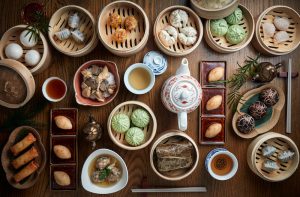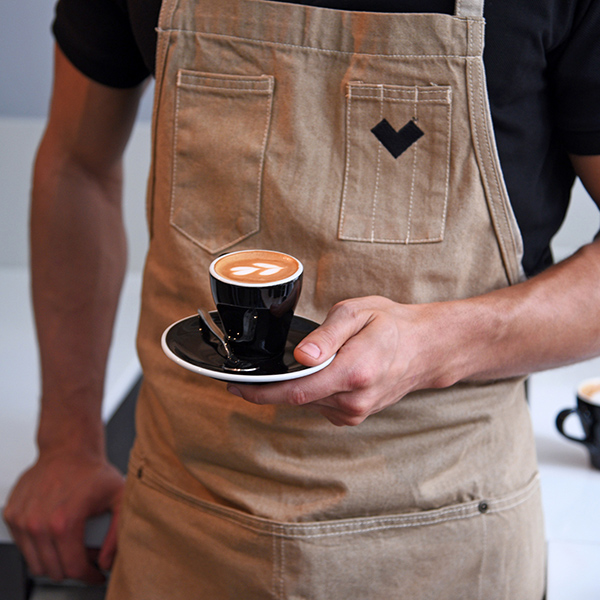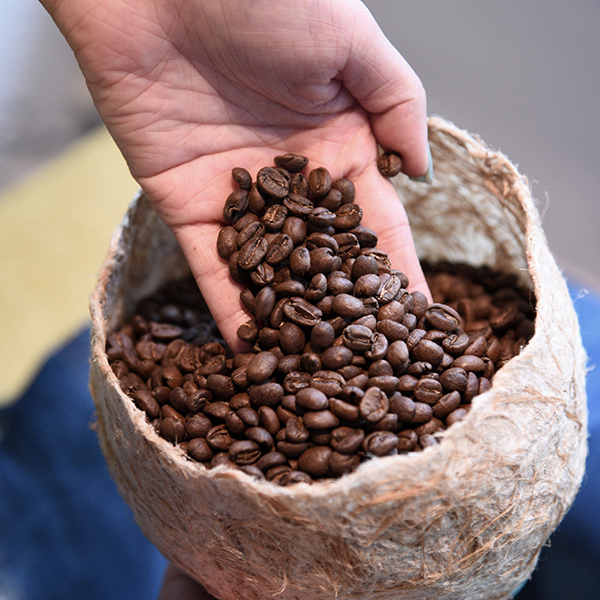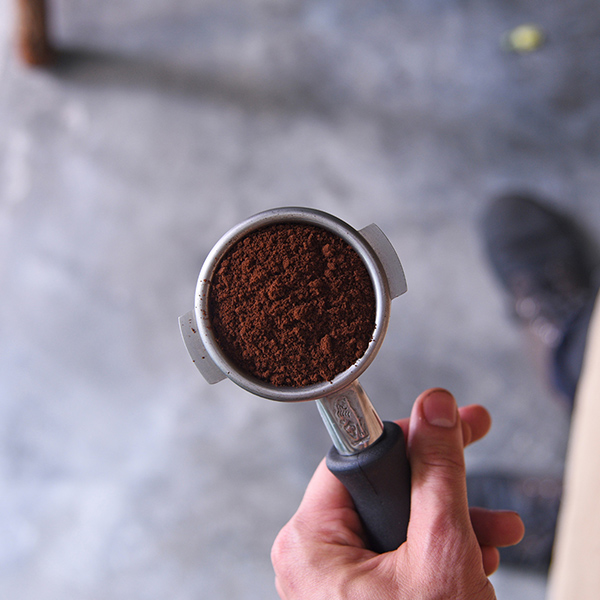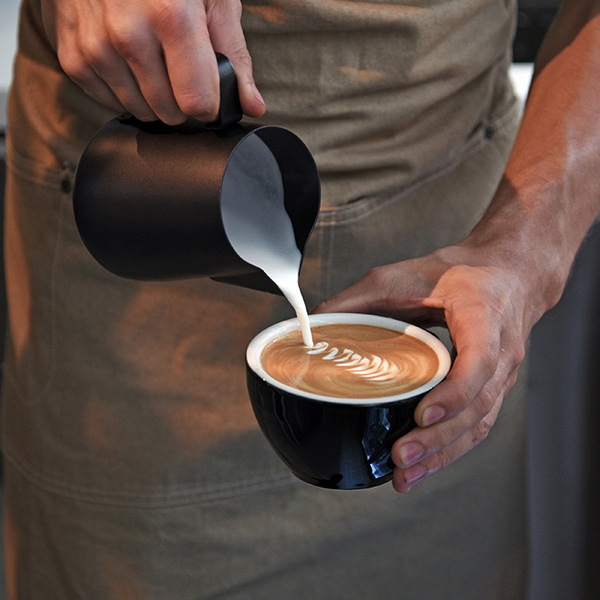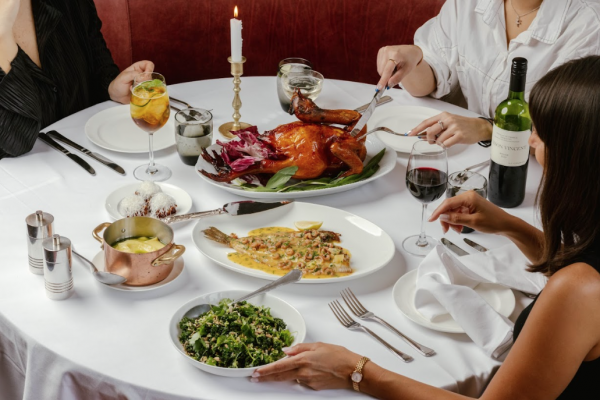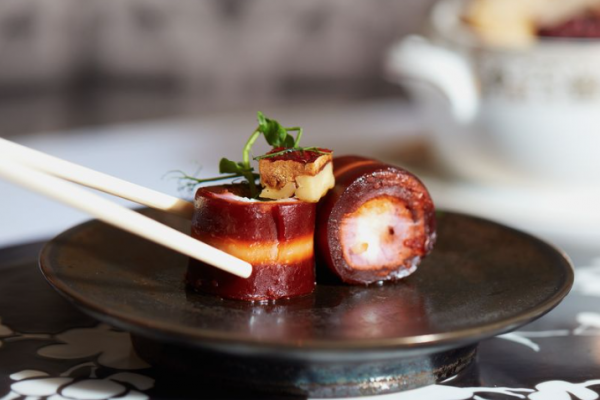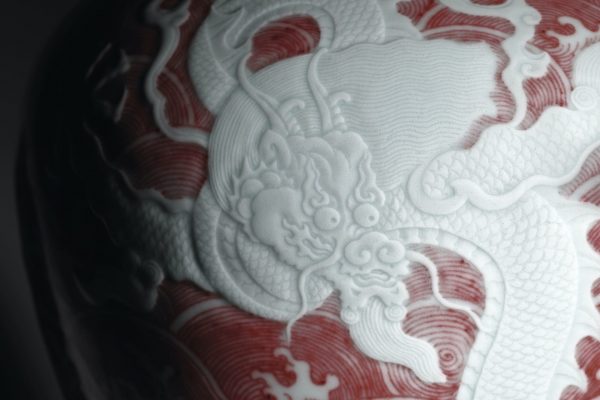I am no coffee connoisseur, but after a two-hour coffee workshop with international coffee training expert, Vassily Lissouba, I certainly felt like one. I Love You So Coffee, currently available at Yenn Wong and Ronald Akili’s latest venture, Potato Head Hong Kong, is a movement of love.
The goal of this coffee program is to promote love and good vibes through coffee shops around the world. It was designed in consultation and collaboration with Scott Rao, international coffee expert, Kenji Kojima, head roaster of Fuglen Coffee in Tokyo and Lissouba himself. The brand’s logo is true to the coffee program’s premise, designed as a simple black heart by Simon Taylor of London-based design collective, Tomato.
A coffee bean is the seed of a cherry. Not the fruit we eat but an actual, red or purple fruit that is referred to as a “cherry”. It is then fermented, dried, washed and roasted. Coffee has a carbohydrate compound which is transformed in the roasting process, developing sweet aromas and turning into the coffee we love to drink.
There are inherent flavours to each stage of the coffee bean. When it is raw, it tastes very vegetal, like corn or raw peanut skins. When roasted, the vegetal taste becomes fruity and a Maillard reaction occurs. Lissouba likes to compare coffee to bread: when a piece of bread is not toasted, it is bland, but when it is toasted, it turns golden brown, smells good and tastes great. When over-toasted, however, it turns to charcoal. Coffee is the same: when roasted lightly, it becomes a “medium roast” where aromatics peak.
I Love You So Coffee gets their beans from a Vancouver based roastery – 49th Parallel, a roastery that understands what specialty coffee truly means. They do direct trade with their coffee farmers and coffee roasters. They know exactly where their coffee comes from and makes sure the money earned goes to the right people. 49th Parallel sends their experts to Columbia and Ethiopia to learn how people grow coffee there, talk to farmers, negotiate rates and understand more about the science behind coffee processing.
According to Lissouba, the idea of third-wave specialty coffee has shifted and coffee shops seem to have developed a more elitist attitude, while their coffee prices keep surging. Coffee, whether it is from Ethiopia, Kenya, Columbia or Guatemala, is supposed to be an affordable product for people to enjoy. This is why at I Love You So Coffee, the goal is to serve delicious coffee at a reasonable price. Their coffees such as flat whites, cappuccino, brewed coffee and pour-overs range from HK$30 to HK$55.
At the workshop we tasted coffee from Guatemala, Columbia and Ethiopia. Guatemala produces fruity coffee with a full mouthfeel. It is creamy and comforting with traditional chocolate notes. It is no surprise why this is preferred by traditional coffee drinkers. Columbia coffee, in particular, was a favorite at the workshop, because it is vibrant and juicy. The Ethiopian coffee that I enjoyed had a delicate mouthfeel, almost “tea-like” and a little bitterness to it.
How to make the perfect brew at home? International coffee training expert Lissouba has a few tips:
1. Use freshly roasted, delicious coffee beans, roasted not more than 20 days. Use a ratio of about 1g of coffee to 17g of water.
2. Filtered water, such as Bonaqua, is recommended. Avoid mineral spring waters and distilled water. With the right water, heat it up so that the slurry (water and coffee) is at around 91 Celsius (95 degrees on an electric kettle)
3. Grind your coffee freshly, with a burr grinder and not a blade one. Blades only “chop” the coffee beans whereas the burrs actually crush them, opening up the structure of the bean so that water can extract matter more efficiently. Get your coffee grounded on a commercial grinder at a shop if you don’t have your own. Fresh grinding will make it so much better!
4. Taste the coffee after completion: if the flavour is a bit underdeveloped (vegetal, grassy or peanut-y) or the taste is a too acidic, then grind the coffee finer. If the flavour is overly bitter or astringent, then grind the coffee coarser. And if you can’t get it to taste good, find better coffee beans!














